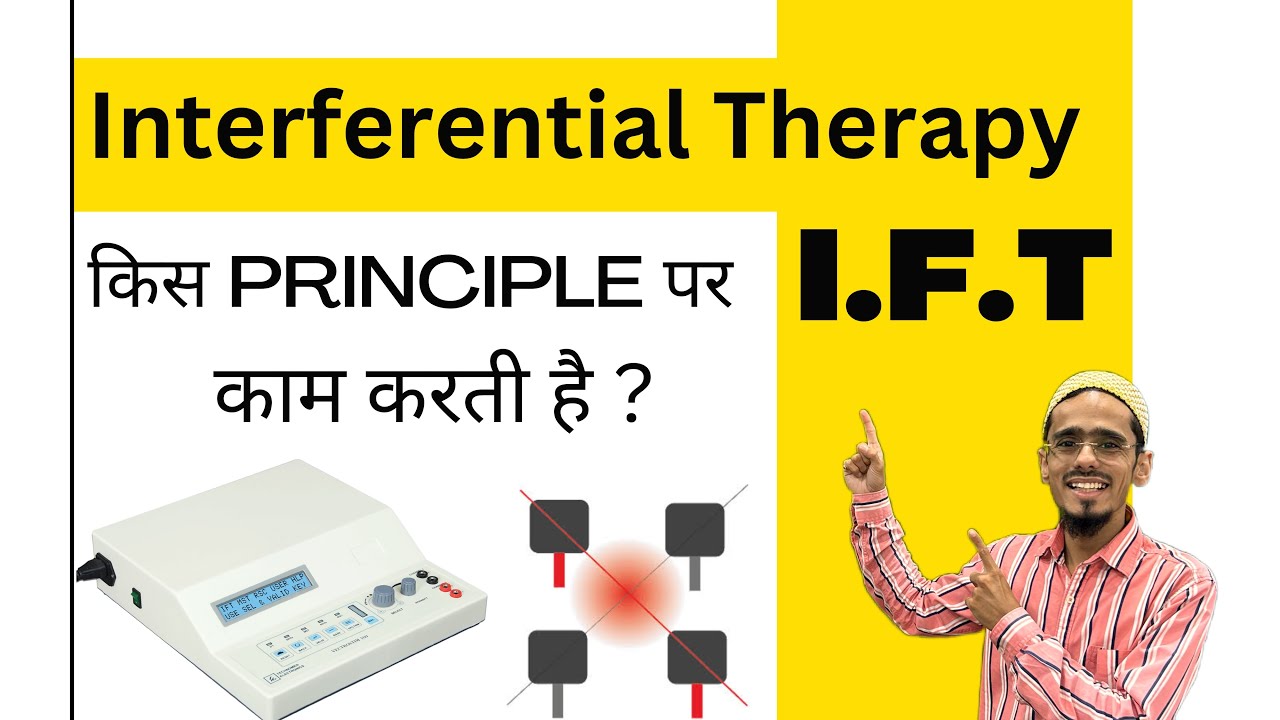Interferential therapy is a therapeutic technique use in physiotherapy and rehabilitation to relieve pain and promote tissue healing.
It involves the use of electrical currents to stimulate nerves and muscles.also known as ift therapy
Interferential therapy working Principle
It works by applying two medium-frequency electrical currents to the body.
These currents intersect and produce a low-frequency pulse within the tissues being treated.
The intersecting currents create an interference pattern
That penetrates deep into the tissues, allowing for a more targeted and effective treatment.
What is the use of IFT therapy?
The main goal of IFT is to reduce pain and inflammation, improve circulation, and promote tissue healing.
It is commonly use for various musculoskeletal conditions, such as acute and chronic pain, sprains and strains, arthritis, and post-surgical rehabilitation.
During an IFT Session patient lies comfortably while electrodes will be place on the skin over the affected area.
The electrodes are connected to a specialized electrical stimulation device that generates the intersecting currents.
The therapist adjusts the frequency, intensity and duration of the treatment based on the individual’s needs and response.
Benefits of interferential therapy
Benefits of interferential therapy may include pain relief, reduced muscle spasms, increased blood flow, enhanced tissue healing and improved range of motion.
It is generally considered safe when performed by a trained healthcare professional
although certain precautions must be taken for individuals with specific medical conditions or implanted devices.
It is important to note that while interferential therapy can provide temporary pain relief and promote healing, it may not address the underlying cause of the condition.
Therefore, it will be use in conjunction with other treatments, such as exercise therapy, manual techniques and patient education, to achieve optimal outcomes.
As with any medical treatment, it’s advisable to consult with a qualified healthcare professional to determine if interferential therapy is appropriate for your specific condition and to receive proper guidance and supervision during the treatment process.
Certainly! Here are some additional details about interferential therapy:
IFT – How it works:
Interferential therapy utilizes the principles of electrical stimulation to modulate pain signals and promote healing.
The intersecting currents produced by the device create a tingling or vibrating sensation in the tissues.
which helps to override pain signals and stimulate the release of endorphins, the body’s natural painkillers.
The electrical stimulation also improves circulation, bringing fresh oxygen and nutrients to the affected area and aiding in tissue repair.
ift physiotherapy uses– Treatment parameters:
Interferential therapy allows for customization of various treatment parameters.
These include frequency, intensity, duration, and electrode placement.
The frequency refers to the number of cycles per second and will be adjust to target specific types of tissues or pain conditions.
The intensity will be modify to ensure patient comfort while still achieving therapeutic effects.
The duration of treatment sessions typically ranges from 10 to 30 minutes, depending on the individual’s needs.
Electrode placement:
The placement of electrodes is crucial in interferential therapy.
They are typically position in a crisscross pattern to create the intersecting currents.
The exact placement will vary depending on the specific condition being treated.
The therapist may experiment with different electrode configurations to identify the most effective placement for pain relief and functional improvement.
Conditions treated with IFT :
Interferential therapy is commonly use for a wide range of musculoskeletal conditions, including back pain, neck pain, shoulder pain, knee pain and various joint and muscle injuries.
It can also be beneficial for managing chronic conditions such as fibromyalgia and osteoarthritis.
Additionallythis therapy may be use in post-operative rehabilitation to reduce pain, swelling, and muscle spasms and to promote tissue healing.
interferential therapy Precautions:
While interferential therapy is generally safe, certain precautions must be consider.
It may not be suitable for individuals with certain medical conditions such as pacemakers, deep vein thrombosis, pregnancy, epilepsy, or cancerous lesions.
It is essential to inform your healthcare provider about any existing medical conditions or implanted devices to ensure the therapy is safe and appropriate for you.
Professional guidance:
Interferential therapy should always be perform under the guidance of a qualified healthcare professional, such as a physical therapist .
These professionals have the knowledge and expertise to assess your condition, determine the appropriate treatment parameters and monitor your progress throughout the therapy.
Remember, individual responses to interferential therapy can vary, and it may not be effective for everyone.
It is important to communicate openly with your Physiotherapist
And follow their recommendations regarding the frequency and duration of the therapy to achieve the best possible outcomes.

2 thoughts on “What is interferential therapy?”
Comments are closed.